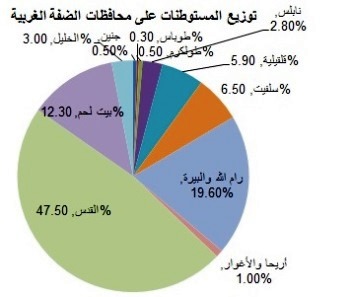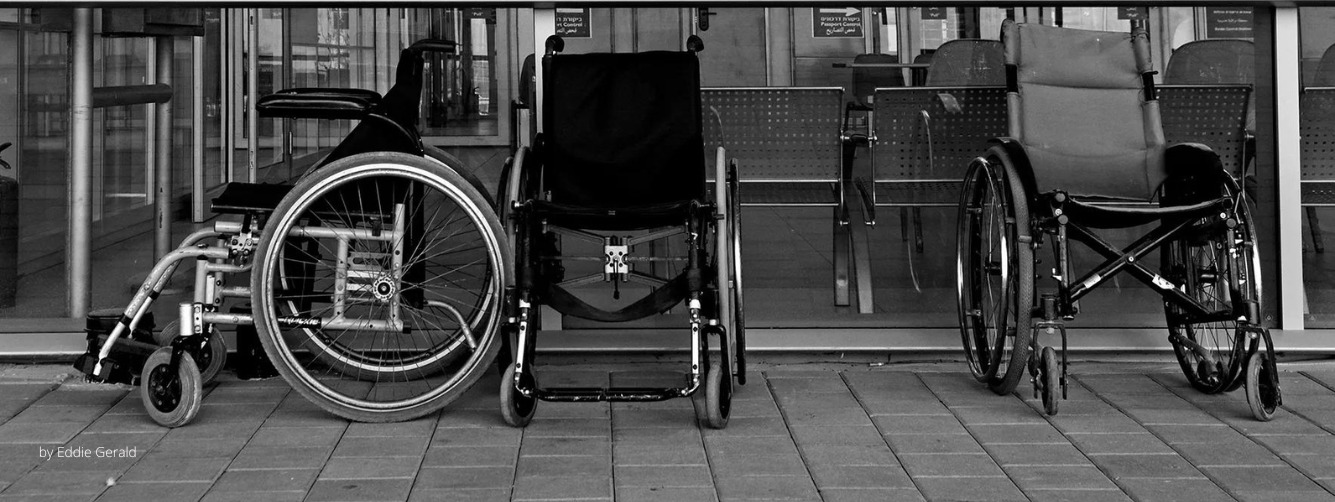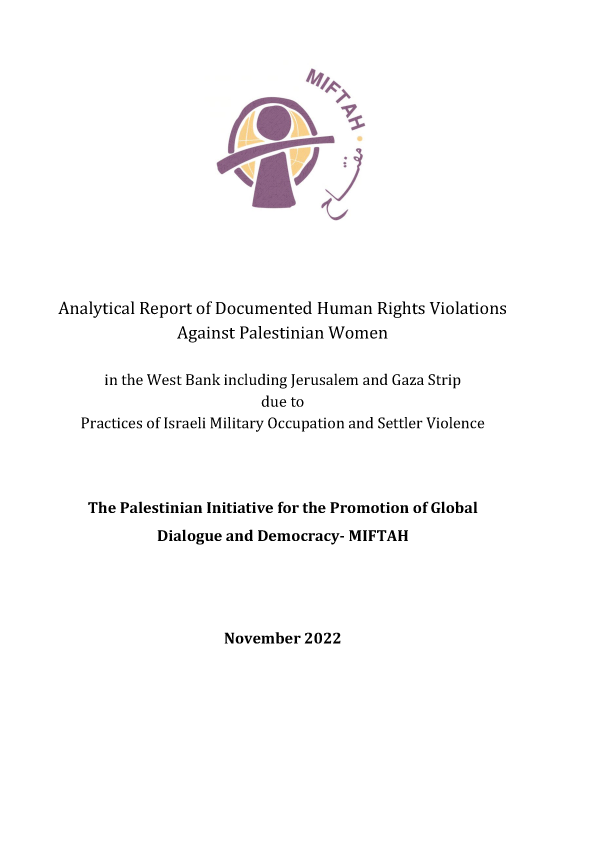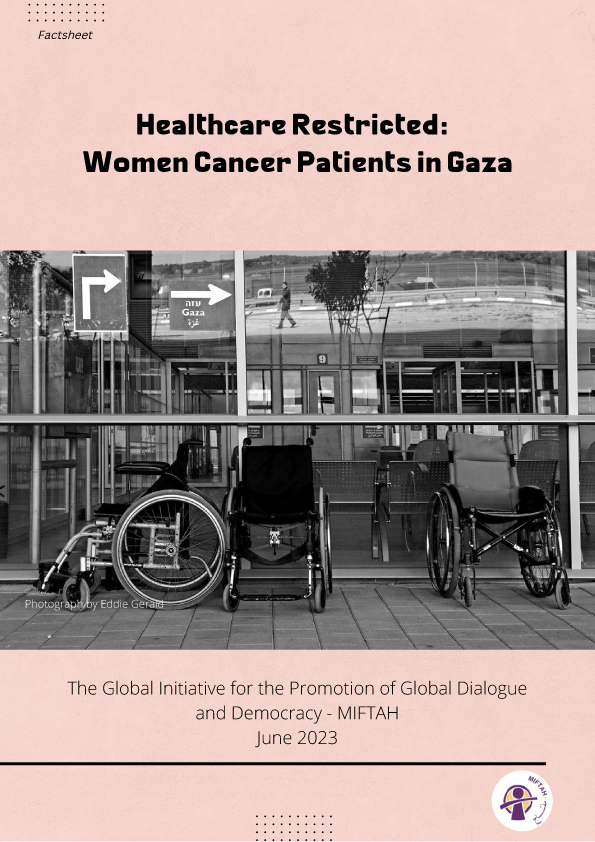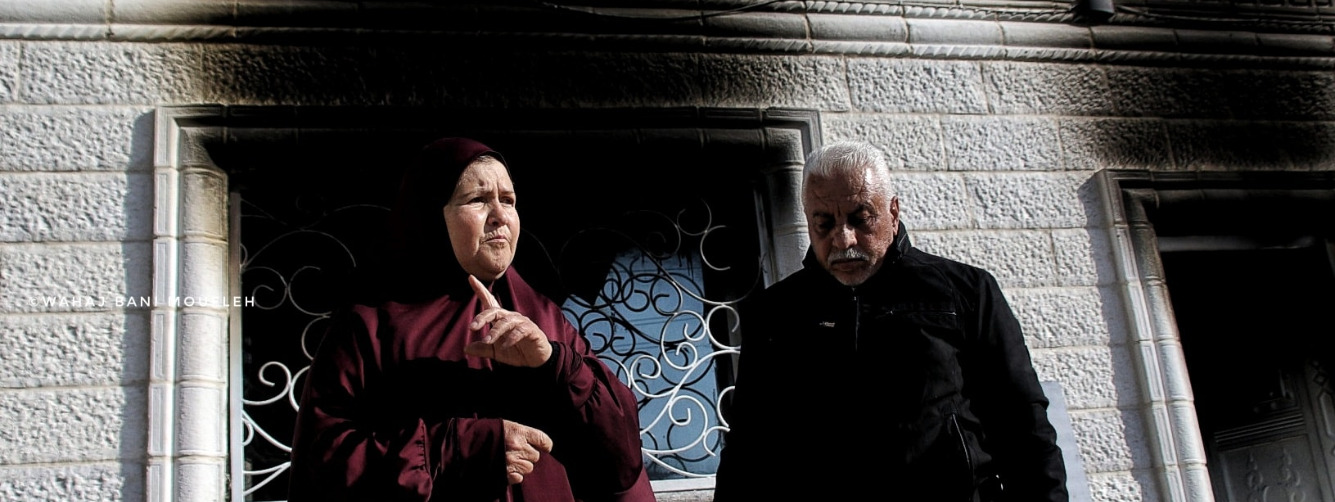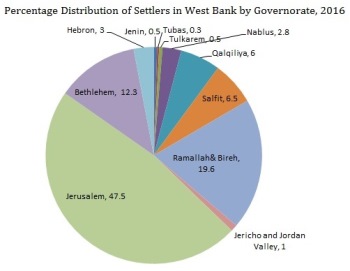
Settlement activity refers to the transfer of a civilian population by the occupying power into territory it occupies. Israeli government characterises settlements as localities that consist of more than 20 inhabitants, are self-ruled, are not included in the formal borders of another locality and are formally recognised. The government of Israel commenced in the establishment and expansion of settlements since the occupation of the West Bank (WB), including east Jerusalem (EJ), and the Gaza Strip (GS). The first settlement, Kfar Etzion, was established in 1967 and is located between Jerusalem and Hebron.
Despite their illegality under international law and the continuous reiterations by the international community that settlements pose an obstacle to peace within the framework of the two-state solution, as of 2016, there are 636,452 settlers residing in 257 settlements and outposts in the WB, including in EJ, compared to 238,060 settlers in 1991 on the outset of the Peace Process.
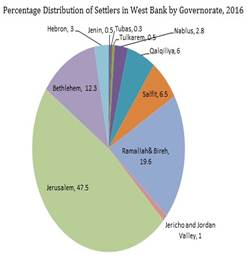 |
|
Settlement expansion in the WB including EJ is directly related to land expropriation. Within this framework, 40% of the WB is under the control of settlements. Additionally; with the construction of the Expansion and Annexation Wall, 12% of the land of the WB lies between the Wall and Green Line. On another level, a total of 200 km of bypass roads are constructed in the WB; additionally, the road infrastructure supporting the settlement enterprise take approximately 2.3% of the area of the WB.
In EJ, settlement expansion is, additionally, directly linked to the evacuation of Palestinians from their homes and their forced displacement. The point of divergence between settlement expansion in EJ and the remainder of the WB lies in that settlements are located in the heart of EJ as opposed to being on the outskirts of cities in the remainder of the WB, with the exception of the Old City of Hebron. Settlement construction and expansion in EJ commenced in 1968. As of 2016, there are 220,000 settlers in 12 settlements inside the Wall.
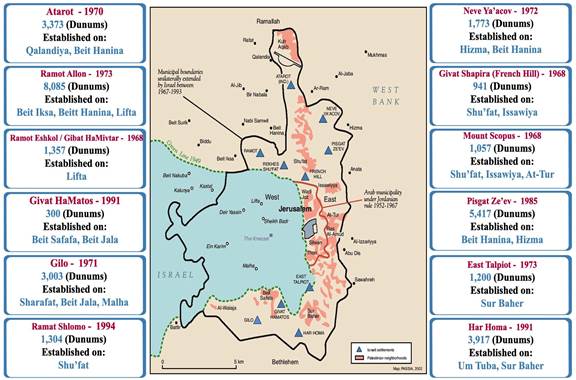
|
| Settlements in east Jerusalem, year of establishment, area of settlement and land established on. |
In addition to land expropriation, settlement expansion is directly linked to settler violence. For example, according to the Applied Research Institute- Jerusalem and Land Research Centre- Jerusalem, during 2017, over 5,000 dunums of land were confiscated, with another 1,338 dunums under threat of confiscation. During the same period, 8,139 trees were uprooted and 527 settler attacks were documented. With respect to water, more than 70% of the Palestinian communities in area “C” are not connected to the water network and rely on tinkered water. Despite the recommendation of the World Health Organisation of water consumption of 100 litters/ capita/ day, the average consumption in area “C” stands as low as 20 litters/ capita/ day, and 73 litters/ capita/ day across the remainder of the WB, compared to an average consumption of 369 litters/ capita/ day for settlers. This infringes in multiple manners on enjoyment of human rights, including the reverberations of denial of access to resources/services, as well as rights to human security, bodily integrity, work, education and healthcare, among others.
This factsheet seeks to lay out the legal framework illegalising and criminalising settlement activity as well as provide an overview of the historical development of the settlement enterprise in Palestine and tracks the increase in the number of settlements and settlers in the occupied Palestinian territory.
To View the Full Factsheet as PDF




